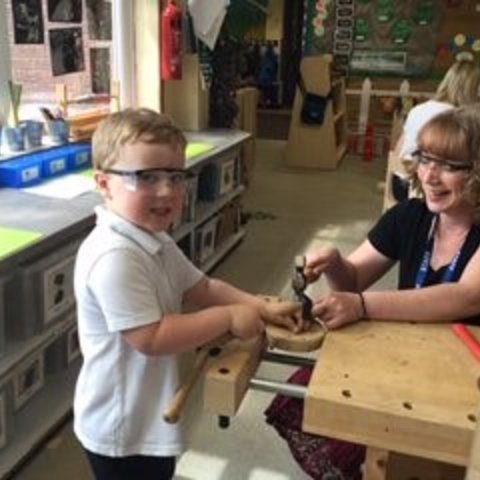Learning Intention
“Design isn’t just about how something looks and feels, it’s about how it works. With a critical understand of human life and its environment, great design creates solutions to questions that may not even have been asked yet.” Miss Walsh, DT Leader
Design and Technology equips children with the knowledge and skills to think and evaluate creatively and curiously to solve real-life problems, both collaboratively and as individuals. Through a range of immersive and explorative opportunities, children develop an appreciation of how events, individuals and products have helped shaped the world and apply this knowledge to engage in the iterative process of the Design and Technology cycle, as children design, create and evaluate innovative, appealing and purposeful products for a variety of users and contexts. Children are empowered to take risks, becoming resourceful and creative individuals who see the significance in their own designs. Children are ambitious and strive to improve in all of their work as they carry out ongoing evaluations and make conscientious reflections on how their final product meets its design purpose. At Meadowbank, our design and technology curriculum is enriched with a wide range of opportunities beyond those of the classroom that challenge children academically and contribute to the creativity, culture, wealth and well-being of the children in our school.
Aims
- To provide a wide range of progressive and appropriately differentiated opportunities that equip children with the knowledge and skills to design and create high-quality, successful prototypes for a variety of different users in a range of contexts.
- To develop the creative, technical and practical expertise needed to confidently perform everyday tasks and successfully adapt to an increasingly technological world.
- To develop the knowledge and skills needed to test ideas, both the children’s own and those of others, to critique and evaluate the effectiveness of the design.
- To understand and apply knowledge of nutrition to create a range of dishes, using a variety of different cooking skills.
Learning Journey
The Design and Technology Leader has a strong understanding of the EYFS curriculum, and the seven areas of learning and development that shape the educational programmes in our Early Years Foundation Stage. All areas of learning and development are important and inter-connected, and the experiences, opportunities and activities which are planned enable children to develop a broad range of knowledge and skills that provide the right foundations for good future progress through school and life. As children move into Key Stage 1 and Key Stage 2, Design and Technology is planned, for Years 1 to 6, using the Design and Technology progressive skills, knowledge and vocabulary maps which enable teachers to ensure they are always planning for the next steps in learning around any skill or experience. Design and Technology at Meadowbank is interactive and engaging. We make links between Design and Technology in our school and the wider world by investigating inspirational design to create a deep understanding of the reason behind Design and Technology learning and its purpose in our local community and beyond. Long term planning in DT investigates influential designers and their works, children learn to critique and evaluate historical design inspirations leaving a Lasting Legacy.
When designing and making, the children are taught to follow a three-part cycle:
Design
• Use research and develop design criteria to inform the design of innovative, functional, appealing products that are fit for purpose, aimed at particular individuals or groups.
• Generate, develop, model and communicate their ideas through discussion, drawings and diagrams.
Make
• Select from and use a wider range of tools and equipment to perform practical tasks (for example, cutting, shaping, joining and finishing) accurately and use materials and components, including construction materials, textiles and ingredients, according to their uses
Evaluate
• Investigate and analyse a range of existing products.
Learning Environment and Immersion
To ensure our budding designers become Life Long Learners we plan for a rich and innovative DT environment and continuous provision that every child has access to. This includes key vocabulary, question stems, creative resources, joining materials and tools for children to access independently. In order to engage children’s curiosity; a range of stimulus linked to the ‘big question’ or key skills, enriches the classroom environment and encourages oracy through discussion, debate and discovery. Children’s interest in Design and Technology is built through the use of real life objects and meaningful experiences which ensure they can see the purpose and reason for design beyond the classroom.
Assessment for Learning
Design and Technology assessment is captured through the use of the DT progression of skills, knowledge and vocabulary map, and each year group’s planning curriculum journals; which clearly outline the medium term planning and learning journey across a half term. This is used to inform planning and map coverage across the year as well as include the children’s voice and their questions, interests and experiences. Highlights of this learning is evidenced through the curriculum planning journal as the ‘big question’ progresses and the whole school portfolio for DT. Personalised short term planning ensures that teachers plan for children to demonstrate their understanding in a range of ways and ensures that this enables them to show their knowledge and skills to the best of their ability. Feedback is given verbally during lessons so that each child can address misconceptions and make accelerated progress towards meeting and exceeding the age related expectations for that area of DT.
Monitoring and review
The Design and Technology leader is responsible for the rigorous monitoring of DT through monitoring evidence added to the Art and DT book, planning looks, pupil agency, lesson pop ins and whole school CPE. Ongoing analysis of outcomes enables the DT leader to identify vulnerable groups of children across school and support staff in accelerating the progress of this group of children across school. Feedback to the teaching team then informs next steps in monitoring and support so that there can be personalised and effective JPD planned to address areas for development. Our children are involved in this monitoring process in a number of ways across the academic year. Children are empowered to talk about their learning through the planning curriculum journals and their own projects which are evidenced in their Art and DT book during pupil agency opportunities. Our children can talk about their prior design and technology learning and how it links to other areas of the curriculum and wider world. Extra-curricular DT experiences such as ‘Ready Steady Cook Club’, provide children with opportunities for further cultural capital and support, challenge and enrich children’s life skills.



.jpg)
.jpg)

.png)
.png)
